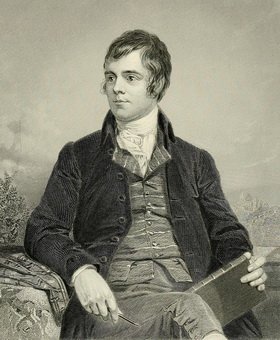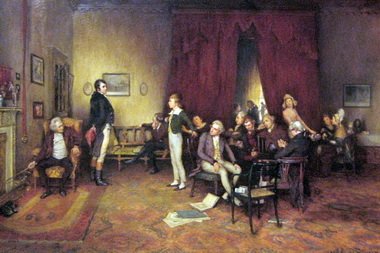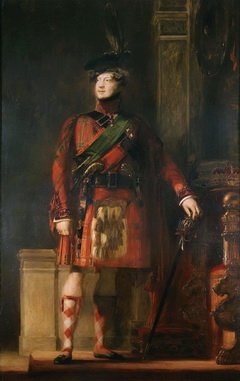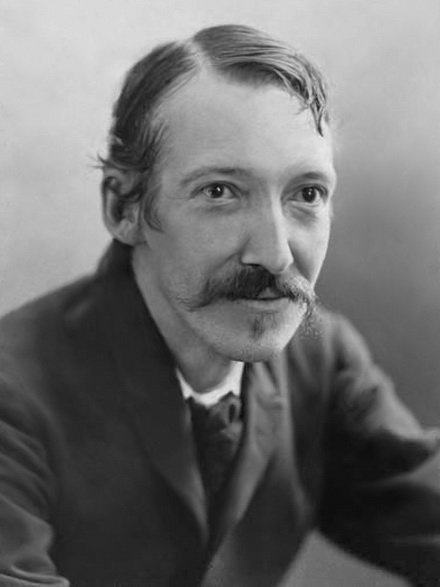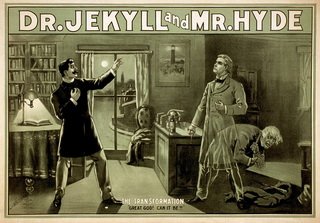Three Riders of… the pen
What Robert Burns and Sir Walter Scott did for Edinburgh
T
he names that will haunt you around Edinburgh are a few. But since the city is also called “the UNESCO City of Literature”, you should expect there will be some writers among them.
They come from different times, and they shaped the story of Great Britain and the world. Yes – the world, because some titles are international:
- James M. Barrie lived in the New Town and studied in Edinburgh. He is the author of Peter Pan
- Arthur C. Doyle – born and bred in Edinburgh – it is he that created Sherlock Holmes (the character based on the author’s professor of medicine)
These are just two mere examples. I remember coming to Edinburgh – I knew nothing. Now, I was walking the same streets as these authors, looking at the same places. Somehow, I understood the pictures that they tried to describe in their stories.
And Edinburgh does love a good story (it even has a Storytelling Centre!). The best ones were written by Sir Walter Scott. Why – you will know in a minute. The other two fames loved in Edinburgh are Robert Burns and Robert Louis Stevenson. Each one was a man of his times, each – described a different life in their books. They all brought something to the city and so they were honored by it. Among the libraries, the storytelling centers, the hobby-like-meetings, the discussion clubs… a museum was created. A museum dedicated to the story of these 3 people – a small, curious place that is intended to spark your interest.
The purpose of this article is to present them to you. I hope that I will also explain, why they are so important in Scotland. We will start with Robert Burns since he is the oldest among the three. We will be threading far from a biography, don’t you worry. It is just an impression to get to know them and some fun facts.
Robert Burns (25.01.1759 – 1796)
The National Bard… when you hear this for the first time you do not know what to think. Especially, when you are a foreigner! Which author in my country was similar…? I am a foreigner, and I find this is the easiest way to understand the author, his main ideas, etc.
This one lived and created in the romantic period. Did it influence him? Or was his life seen through his poetry and that made it romantic? Or maybe this is because he died quite young – at the tender age of 38 (probably due to health problems).
Let’s start with the fact that Robert wasn’t from Edinburgh. He was born in a family of a farmer (an educated one!) in Alloway, Ayrshire. He worked hard at youth, with his father (this may be what ruined his health), and spend a lot of time learning. He wrote about the things he was experiencing. About the hardship of work and life – and a reader felt a connection with that. Burns also managed to write it in a new and catchy style…
But is it all? Is this why people love him so much?
I sometimes wonder if this is the case of his poetry or life, you know. The poetry was based on life – is it a secret of its attractiveness? His life, apart from the hard part, was quite colorful: women, illegitimate children, work on Jamaica, the life of a vagabond, friends, the feeling of being young and misunderstood… Later – a song on the lips, alcohol, his country, politics, and religion as well.
So… was it just poetry, or life?
What is important, is that his youth brought him to Edinburgh. After a few romantic encounters and an attempt at Jamaican business, Burns was in debt. With his last try, he wanted to earn some money to go to the colonies again. A friend advised him to print and sell his poetry – a few simple poems about the countryside, life there and youth. But surprisingly, the new style of his writing and humor was welcomed. He didn’t need to leave Scotland anymore. He managed to get to the most prestigious literary circles of Edinburgh – without letters and patronage – that was quite something!
There he became active and more up-to-date in the area of science and politics. He met others – like Robert Fergusson, who inspired him with his poems about Edinburgh and Scotland. He met the stars of the XVIII century – you can see it in the painting by Hardie (Meeting of Burns and Scott). He is in the company of Prof. Ferguson, Joseph Black M.D., James Hutton (geology) and Walter Scott (when he was still a teenager). Burns published more, and the cover of his book represented him as a young gentleman in the romantic, Scottish countryside.
So was it a creation of life itself or others – the people he knew? Or maybe he, himself, was new? Because nobody else was writing poems like Nine inches would please a lady – and it is about those things that you think about right now!
He had another idea – he wrote poems-songs to the rhythm of popular pub music. Genius! First, you feel the rhythm, then you start to think what the author wanted to say. And the song stays with you.
Auld Lang Syn by Robert Burns
Or maybe it was everything combined? His life, the right moment in history, his original way of seeing the world, expression, sense of humor… Today, he is celebrated in the same way he liked to live. The day of his birthday (25th January) is a date of a celebration called The Burns’ Night. In the tradition you drink, eat haggis and sing his poems… in a pub preferably.
A place of his memory in Edinburgh is his monument-mausoleum close to Regent Rd (next to Calton Hill).
Sir Walter Scott (1771-1832)
As it was written before – Burns met a young and bright man in Edinburgh once. It was Walter Scott, who, even as a teenager, had a sharp and quick mind. We cannot say that it was one that influenced the other. It was beneficial for both of them. And so, one became the national bard. The other one – the national writer and a fighter for Scotland.
What comes to mind when we say his name? Maybe Ivanhoe or Rob Roy? I know that one is old and another – a movie, but without W. Scott, there would be none. But before their story came to pass, there was a boy…
The house where he was born was somewhere between the Old College and the Cowgate Street – on College Wynd (cramped conditions of Old Town, etc.). After a while, his family moved to George Square (close by) – to have more space around them.
He suffered from polio, but his illness gave him experience. While being sick, he had a lot of time to read and study. The stories from Edinburgh, stories from Scottish Borders where he went to visit, the countryside, the folk stories, and many others.
When he got better, or older, he started to explore on his own. He was a teenager by now, with a dream of a career but the heart full of adventure. After his studies at Edinburgh University, he became a lawyer, but he was still fascinated with Scottish history and traditions.
As a lawyer and later Lord Advocate, he could better observe what was happening in the Highlands. On the one hand, he was law, English law; but on the other – he dreamt about ways to help his nation.
He started his career as a writer of poetry – composing about the Borders and folk legends. This is how The Lady of the Lake was created – the one that inspired Schubert (worth noting – even Beethoven used his poems in his works). But Scott wanted to try something else – the novels.
It is difficult to say why he published anonymously. For once, a novel was inferior to poetry. Maybe he didn’t want to ruin his reputation. On the other hand – he wrote about difficult moments in Scottish history – the controversial ones, like The Jacobite Rising of Prince Charlie. Of course – he wrote about a romantic hero and his journey, but there was the history in the background. Maybe as a renowned lawyer, he didn’t want to share his political opinions…
His first novel was titled Waverley and spoke about the Highland culture. Then, others came, and are now collectively called – Tales of Waverley. They all spoke about heroes doing wonderful things and living a life of adventure. With Scottish landscapes, that were seen in the background. With a hint of authentic, historical events that ruptured the country. That was a HISTORICAL NOVEL that was spreading the fire! – a new creation, which quickly started to be loved.
Even the future king wanted to meet the “Author of Waverley” or “the Wizard of the North” – as Scott started to be called. His anonymity became a known secret. This is also how his relationship with George IV started. It was Scott’s work that brought the king to Scotland after 172 years of royal absence.
But before that happened, Scott became even more popular. He became the Lord Advocate, a poet, and a historian. For him, novels were a real-life fascination with the history of Scotland. He collected her stories and also the artifacts. He saved a lot from being forgotten. He became an expert in the subject. Maybe this is why George IV asked him to find the Royal Jewels of Scotland. Scott did it, in February 1818, and for that, he was made a Baronet.
The next thing he did was the preparation of the royal visit to Edinburgh (in 1822). His Highness was greeted by the reality from the books – Highlanders, pipes, tartans and Scottish traditions – all that captivated the minds of Englishmen. He even wore a kilt himself, and this is what partially made Scotland popular. The time of oppression after the Jacobite Rising ended. Highlands, and Scotland, have become something else entirely!
Scott died in his house in Abbotsford, surrounded by his collection of Scottish historical artifacts (eg. Coat of arms from the Mercat Cross of Edinburgh). He left something more than a legacy. Thanks to his work Highlands were popular again (which was hard after the persecutions and forced move out of the people). Scotland became famous. Many Englishmen wanted to see it and compare it with the novels. Maybe even buy a kilt, drink a drum of whisky, have a romance with a fiery-hearted Scot.
You didn’t know probably, that tartan (of today) didn’t exist before Waverley. It was the success of the novels that made the Clans create their symbols: the pattern of colors and the shape of a brooch.
(another thing about Scots – they are very enterprising, and tourism was and still is tourism)
Maybe it is too far to Abbotsford from Edinburgh, but if you want to see the author, there is a simple solution. There is a black spire in Princes Street Gardens– it is the Scott Monument and the writer is sitting there with his dog – looking at his fellow Scots.
R.L.Stevenson (1850-1894)
Let’s leave Romanticism and go forward in time. The next fame was also born in Edinburgh, very close to the Royal Botanic Gardens, and is known worldwide. His family was fairly wealthy, and they moved to the New Town when he was still a boy (11 Heriot Row, next to the Queen’s Gardens). He was a sickly child with problems with his chest (bronchitis? Sarcoidosis?), being constantly ill in winter, not going to school. He spent a lot of time with his nanny. She nursed him and told him stories from the Bible mixed with folk tales. The boy took it all in. His imagination was wild, and even a simple thing, like watching a lamplighter through the window, could turn into a poem – The Lamplighter, for example.
It is good, that the family was wealthy because Robert was taught privately. His father was an engineer who constructed the lighthouses. He gave him a lot of occasions to join him on his trips. Robert didn’t want to enter the family business. Although he had fallen in love with Scottish Isles – they influenced him a lot.
When he finally told his parents about becoming a writer… (parent’s nightmare?) …they were not happy… but happily resigned (although they made him study law in the meantime – just in case). What more a child would want?
But is it enough to create a museum for him? Because he was born in Edinburgh and “was a great writer”? Of course not… but I haven’t finished yet.
He was a traveler. In the beginning, his trips were connected to his health but later… He visited his family in England, he recovered in Menton on French Riviera, visited France a lot, went canoeing in Belgium, took a walking tour through Europe gathering ideas for his next book. He went to New York and then to California just to find the woman of his dreams and tell her he loves her. His journeys taught him to stay positive and resulted in the invention of very practical things. For example – on his walk through Europe (in the need of warmth one night), he invented a sleeping bag – using a flea-bag, some wool, and paper.
He eventually moved to Samoa. It was good for his health and he finally died there.
Real-life experience, traveling, and ingenuity… if it is not enough you just need to check those books.
Everybody knows Treasure Island – and it is his!
Not to mention that he turned the story of William Brodie into an eternal jewel. The double life of the Deacon was an idea that inspired him to write The Strange Case of Dr. Jekyll and Me Hyde. He wrote it in 3 days lying in bed… it was read by Fanny (his beloved wife – she used to be the first reader) … He burned it! And wrote it again!
His memorial in Edinburgh is in St Giles Cathedral. We can see him there, lying in bed/chair – not feeling well, maybe thinking about his next book
What creates greatness then? Maybe the fact that those three inspired others – with their life or their life’s work. Writers Museum in Wardrop’s Close tells us only a part of the story. It is small – but there is plenty inside. You can see pictures, small souvenirs – tools used in their work, you can read some interesting details.
Even the building itself is worth visiting. It is a true town villa from the XVII century. That one belonged to Lady Stair as we can read on a plaque on the building.
Look how scarce is space inside, all those passages from one room to another make a labyrinth, check the staircase. Watch out there – because there you can experience an old thief-alarm-system – the false step (height is different). A surprise like that was nothing for people who lived there, who were used to it. But if somebody didn’t know… and tripped, and went down making noise or cursed feeling pain. He woke everyone – and that was the point!
The last thing is outside. Under your feet on the courtyard, you can see the quotes in Edinburgh’s name. There is even the Auld Reekie of Robert Fergusson. Can you find it? You can also try to find the sign of the fire insurance – a special mark on the wall, left from the entrance – joined hands telling firefighters that this was the first house to take care of.


